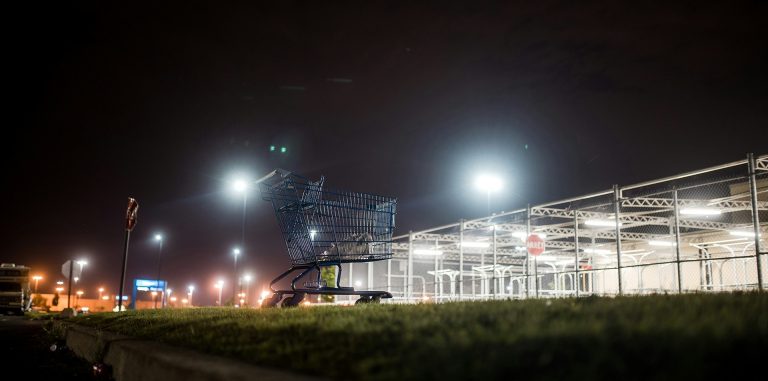What should warehouse clubs like Costco do to stay competitive amid a rise in online shopping?
The retail landscape has shifted considerably in recent years. Instead of browsing brick-and-mortar shops in person, many consumers are shopping online. A new Concordia study published in the International Journal of Physical Distribution and Logistics Management considers how warehouse clubs like Costco are adjusting their longstanding business model to stay afloat amid evolving consumer behaviours.
Traditionally, stores like Costco focused on selling bulk-size products and discounted gas to consumers from suburban locations. The idea was to justify the membership fees and the travel by encouraging big purchases. But online shopping offers products at the same price with the added benefit of home delivery.
To understand what warehouse clubs must do to attract consumers, a Concordia researcher and her co-authors analyzed data from 516 Costco locations across the U.S. from January 2019 to October 2020. This included customer foot traffic, local ecommerce activity and geographical information.
They also looked at two types of retail competitors. The first included general merchandise retailers, such as other warehouse clubs (Sam’s Club), supercentres (Walmart), department stores (Macy’s) and online retailers (Amazon) that sell a wide range of products. The second type consisted of narrow-range or specialty stores like hardware (Home Depot), office supply (Staples), electronics (Best Buy) and grocery stores (Kroger).
The findings highlight the importance of developing strategies that address both types of retail competitors.
Online shopping through big general merchandise retailers like Amazon and Walmart pose the biggest threat to foot traffic for Costco, according to the researchers. By contrast, online shopping at specialty stores did not make a dent in Costo’s foot traffic.
Density of options
One of the critical insights from the research is the role of retail clusters in driving customer foot traffic. Proximity to other general merchandise retailers can significantly boost customer visits to Costco.
On the other hand, how close the warehouse club is to narrow-range retailers shows mixed results: while grocery stores can enhance foot traffic to Costco, other specialized stores like electronics shops do not have the same impact.
“Our observations underscore the importance of supermarkets and grocery stores as critical anchors in shopping areas,” says Xiaodan Pan, associate professor in the Department of Supply Chain and Business Technology Management at the John Molson School of Business. “They attract regular shoppers and can drive traffic to other types of retailers, such as warehouse clubs.”
She notes that by converting to the supercentre model, stores like Target and Walmart have successfully used grocery sales to drive foot traffic to their retail outlets, even as online shopping grows.
Navigating the online/in-person divide
Researchers have noted that, despite its established presence, Costco has been slow to develop its online sales. These sales currently account for around seven per cent of its total revenue — far behind competitors like Walmart and Target.
Given their reliance on foot traffic to physical retail outlets, Pan and her co-authors have several key suggestions for Costco and other warehouse clubs:
- Broaden their customer base and elevate membership value by expanding on-site services. This strategy enhances the overall customer experience while fostering deeper engagement, promoting long-term customer loyalty and driving sustained growth.
- Adapt to changing consumer behaviors by introducing urban micro-format stores, similar to IKEA’s city-centre locations. These smaller, strategically placed stores can provide greater accessibility and convenience to urban consumers, particularly those without personal vehicles.
- Combine urban locations with online services, such as click-and-collect, to attract urban shoppers while allowing warehouse clubs to maintain a smaller physical footprint. Customers can shop online and pick up their orders in-store, minimizing the need for long-distance trips while still enjoying membership benefits.
- Add features like drive-thru lanes and curbside pickup to cater to the fast-paced lifestyle of urban shoppers, making the experience more convenient and appealing.
“As the retail landscape continues to evolve, the resilience of warehouse clubs will depend on their ability to adapt,” Pan says.
“By expanding service offerings, strategically locating stores within retail clusters and integrating digital and physical shopping experiences, warehouse clubs can better navigate this shifting environment and meet the needs of modern consumers.”
Adapting to the changing retail shopping patterns, especially the rise in online sales, can have profound impacts not only on retailers, but on the communities that they serve. Pan and her co-authors note the economic effect of failing brick-and-mortar stores across the globe, like massive job losses and reduced tax revenues, which in turn puts a strain on local economies. Understanding how retail clusters promote consumer shopping trips is essential for maintaining the vitality of shopping districts worldwide, they conclude.
The project was supported in part by the Social Sciences and Humanities Research Council of Canada (SSHRC). The article was co-authored by Guang Li, Martin Dresner and Benny Mantin.
Read the cited paper, “Exploring the impacts of ecommerce activities on the spatial resilience of warehouse clubs: the role of retail agglomeration.”



